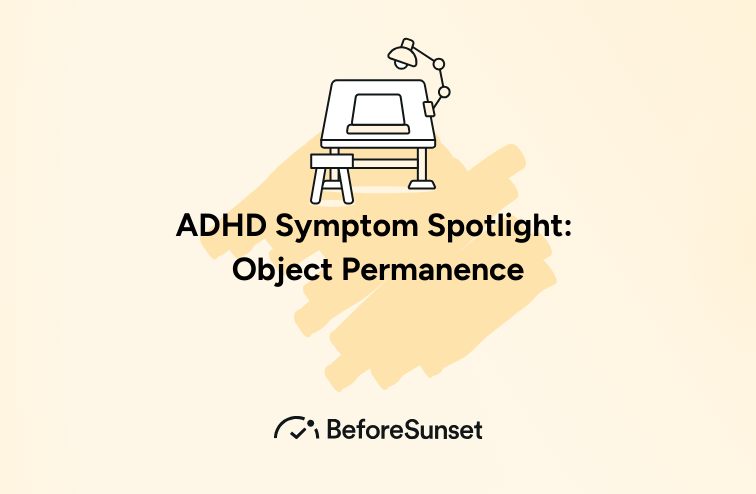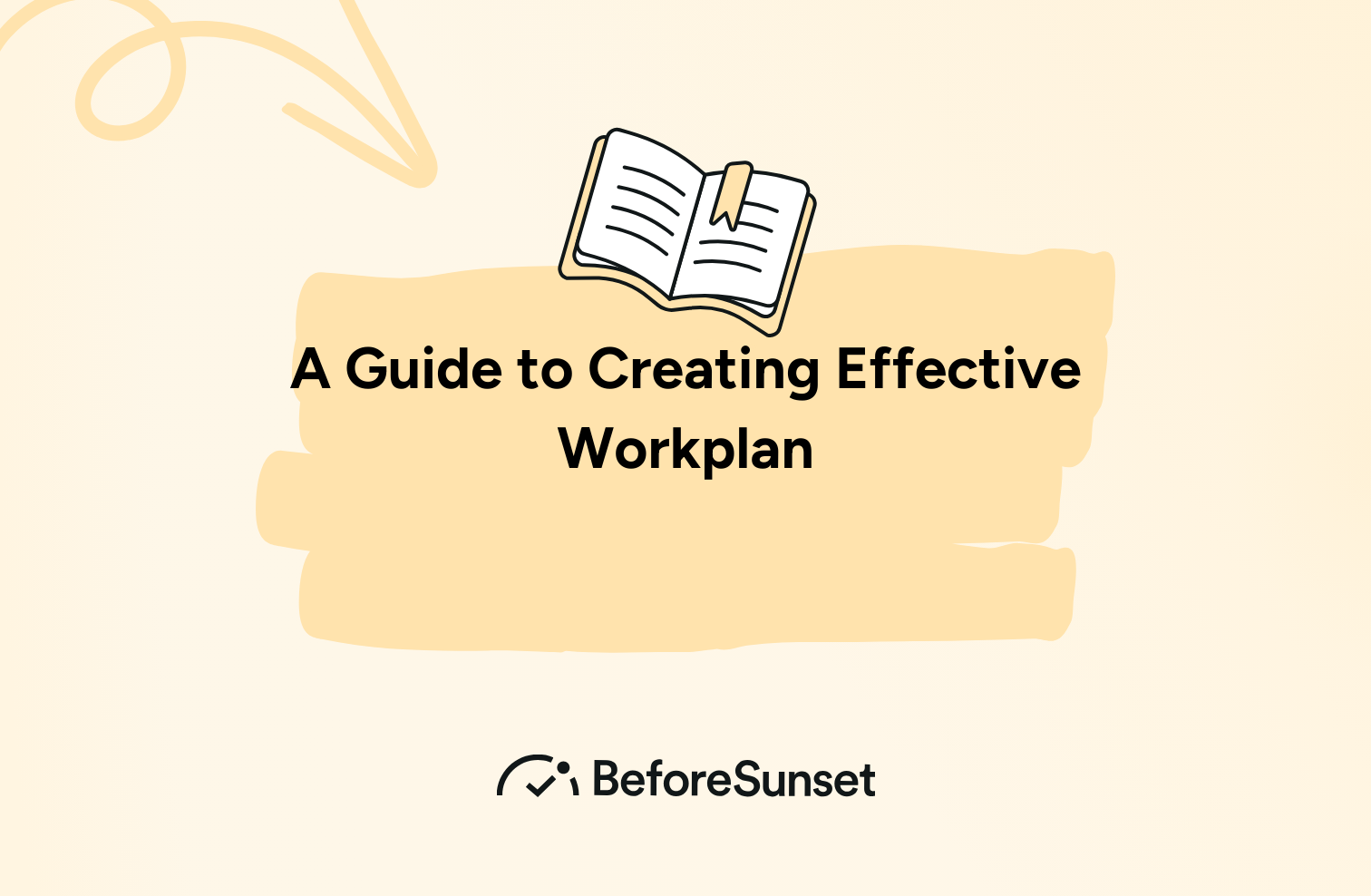ADHD Symptom Spotlight: Object Permanence


Table Of Contents
What Is Object Permanence?
Object permanence is a fundamental concept in cognitive development that indicates a person's ability to recognize that objects exist even when they are not in their direct line of sight.
This cognitive milestone usually appears during infancy and is critical for many aspects of learning and interpreting the world.
It serves as the foundation for memory growth and understanding the long-term presence of people, objects, or ideas.
Do People With ADHD Lack Object Permanence?
Individuals with ADHD may face difficulties with object persistence.
ADHD is a neurodevelopmental disease characterized by difficulty maintaining attention, impulse control, and hyperactivity.
While object permanence is not explicitly impaired in ADHD patients, the disorder's symptoms, such as distractibility and forgetfulness, can create the impression of a temporary loss of object permanence.
It is crucial to remember that these difficulties can differ amongst individuals with ADHD.
What Causes Lack of Object Permanence?
1- Brain Development
The stage of brain development is a major element in determining object persistence. Infants are still going through a lot of neurological development in their first few months.
During this time, the prefrontal cortex, which is responsible for executive functions including attention, memory, and problem solving, develops rapidly.
Infants may struggle with the concept of object permanence until they reach a certain developmental stage.
2- Sensorimotor Stage
According to Jean Piaget's theory of cognitive development, the lack of object permanence is most noticeable during the sensorimotor stage, which lasts from birth to about two years old.
During this period, newborns primarily interact with their surroundings through their senses and motor activity.
Object persistence arises gradually as newborns learn that objects exist independently of their immediate awareness.
3- Experience and Exposure:
Experience and exposure play an important role in the formation of object persistence. Infants learn by repeatedly interacting with items and the environment.
As infants meet persistent patterns of disappearance and reappearance, like as when a caregiver hides behind their hands before revealing themselves, they begin to understand that items and people exist even when they are not visible.
4- Social Interactions
Social interactions, particularly with other people, have a profound impact on the development of object persistence.
To give examples from kids again, caregivers who play peek-a-boo games or hide and reveal objects give infants experiences that help them develop their notion of permanence. Positive and responsive interactions during these activities improve the learning experience.
5- Cognitive Milestones
Object persistence is recognized as a cognitive milestone in early childhood development. As children move through several phases of cognitive development, their capacity to understand and remember the notion of object permanence improves.
The development of related cognitive abilities, like as memory and attention, also aids in the solidification of object permanence.
6- Individual Differences:
It is critical to recognize that individual variances exist in the rate at which children learn object permanence.
Temperament, innate cognitive aptitude, and the quality of caregiving experiences can all impact when and to what extent a newborn develops object permanence.
Recognizing the interplay of biological, cognitive, and environmental components is essential for understanding the multidimensional nature of the absence of object permanence.
While object permanence is a typical part of early cognitive development, its progressive appearance lays the groundwork for more complex cognitive processes as we proceed through the stages of cognitive growth.
What Are The Consequences Of “Out Of Sight, Out Of Mind”?
The phrase "out of sight, out of mind" describes the difficulties that people with ADHD may experience with object persistence.
This syndrome can affect many parts of life, including obligations and relationships.
Responsibilities
It might be difficult for people with ADHD to keep track of their duties and commitments.
Important assignments or deadlines may slip from mind once they are out of sight, with significant implications in academic, professional, or personal arenas.
Understanding how object impermanence affects duties is critical to creating good coping methods.
Relationships
In partnerships, object permanence issues might emerge as forgetting or apparent disinterest.
Loved ones may interpret this as a lack of dedication or concern, thereby straining personal relationships.
Recognizing and addressing these issues is critical for developing and sustaining good partnerships.
How Do I Cope With Object Impermanence?
Coping with object impermanence, particularly in the context of ADHD, entails employing tactics that promote memory retention and attentiveness. Here are some useful tips:
Use Visual Cues
Integrate visual reminders into your surroundings to emphasize the presence of critical tasks or products.
Post-it notes, color-coded calendars, and visual schedules can be excellent tools for combating the "out of sight, out of mind" phenomenon.
Set Recurring Alarms
Use technology to schedule regular alarms or reminders on your phone or other devices.
These regular indications can assist refocus attention on important activities or duties, reducing the influence of object impermanence on daily responsibilities.
Collect Reminders That you are Loved
In relationships, actively seek and retain reminders of love and connection. Notes, tokens, or images may be carefully put in visible spots.
These reminders help mitigate the undesired consequences of item impermanence and improve emotional ties.
Engage in Self-Compassion and Educate People About your ADHD
Practice self-compassion by admitting the difficulties that come with object impermanence.
Educate yourself about ADHD and share your knowledge with those around you.
Increased knowledge and understanding can create supportive environments, reducing the potential negative influence on relationships and obligations.
Coping with object impermanence is a journey that requires self-awareness, adaptability, and successful communication.
You can better negotiate the issues of ADHD and object persistence by using individualized tactics and cultivating understanding in your relationships.
6 Tips for Coping With Object Permanence Challenges
Living with ADHD and overcoming object permanence issues can be a unique experience. Fortunately, there are practical techniques for dealing with these challenges successfully.
1. Set Reminders
Accept the power of technology to establish reminders for key activities and deadlines. Use calendar software, task management tools, or basic alarms on your phone to get regular reminders.
Consistent reminders can help to anchor work in your consciousness, reducing the impact of object persistence issues.
2. Exercise Regularly
Physical activity has been demonstrated to improve cognitive performance, particularly memory. Regular exercise stimulates the release of neurotransmitters that improve concentration and attentiveness.
Incorporating a consistent exercise regimen into your daily routine will help to enhance overall cognitive function, potentially assisting in managing object permanence issues.
3. Don't Open Text Messages
Text messages can quickly fall out of sight and mind. Resist the urge to open messages without instantly responding to them.
Use your phone's notification system as a visible cue to respond to communications promptly.
Addressing communications in real time decreases the probability of forgetting crucial information or duties.
4. Keep a Cleaning Routine
Maintaining an ordered and clutter-free environment might have a substantial impact on object permanence issues.
A regular cleaning regimen promotes visual order, making it easier to find and recall where items are placed.
Designate specific areas for regularly used things to improve spatial memory and limit the possibility of misplacing them.
5. Be Honest With Loved Ones
Open and honest communication with loved ones is critical in addressing object permanence issues in relationships. Explain the nature of ADHD and how it can affect your notice of certain details.
Encourage understanding and provide a supportive environment in which your loved ones can actively participate in strategies to address these difficulties.
6. Join a Support Group
Connecting with people who have had similar experiences can be empowering. Consider joining a support group for people with ADHD.
Sharing insights, concerns, and coping strategies with others going through object permanence issues can provide useful views and a sense of community. Online or in-person support groups provide opportunities for mutual support and growth.
Final Thoughts
Living with ADHD and addressing object permanence issues necessitates a diverse strategy.
Implementing these practical techniques into your everyday routine, will help you to get better at managing the complexity of object persistence.
Remember that everyone's path is unique, and determining which tactics will work best for you is a slow and personalized process.
Accept the strengths that come with ADHD, remain resilient, and seek help when necessary.
Together, these steps can lead to a more empowered and fulfilling existence.








.png)
.png)
